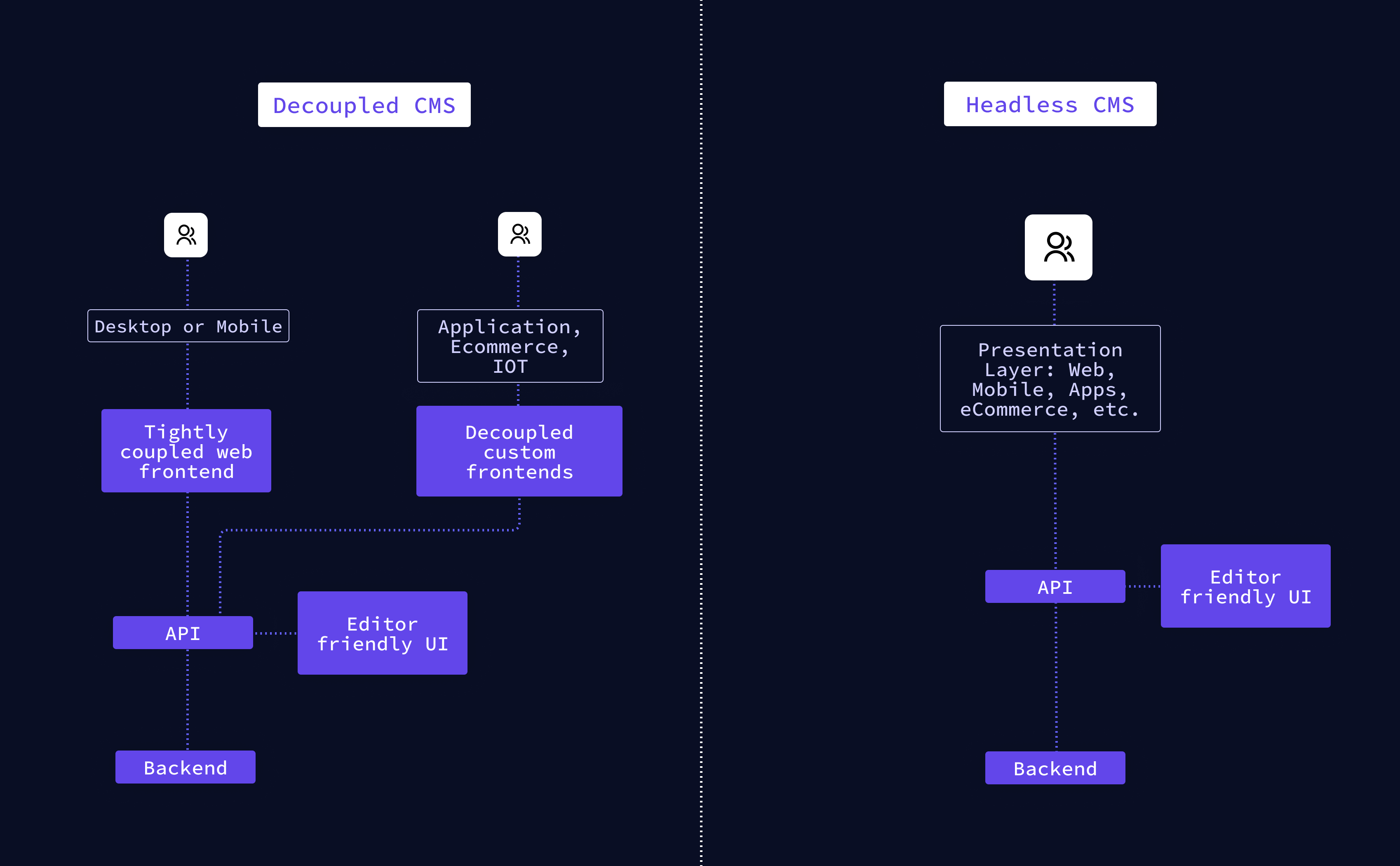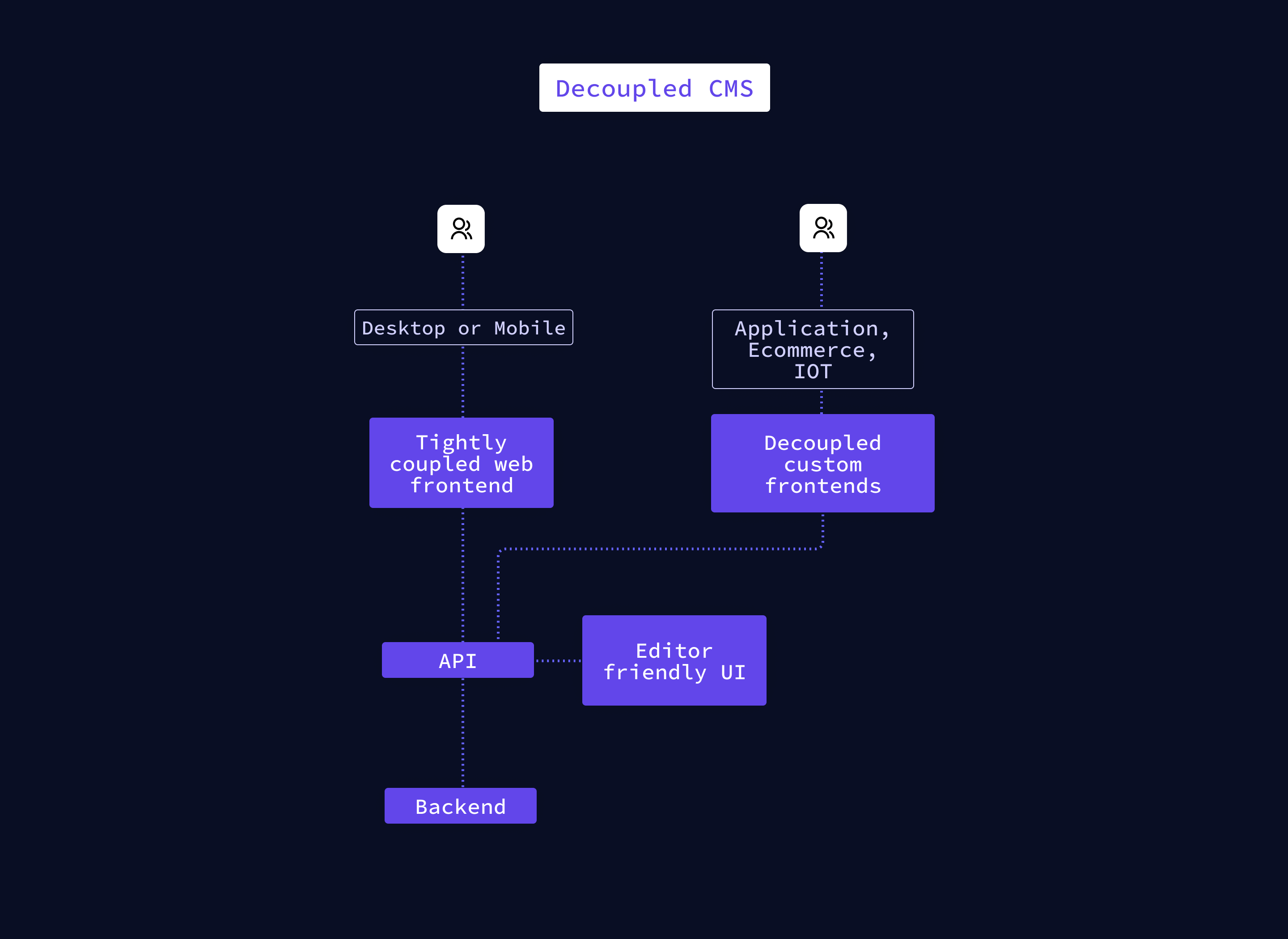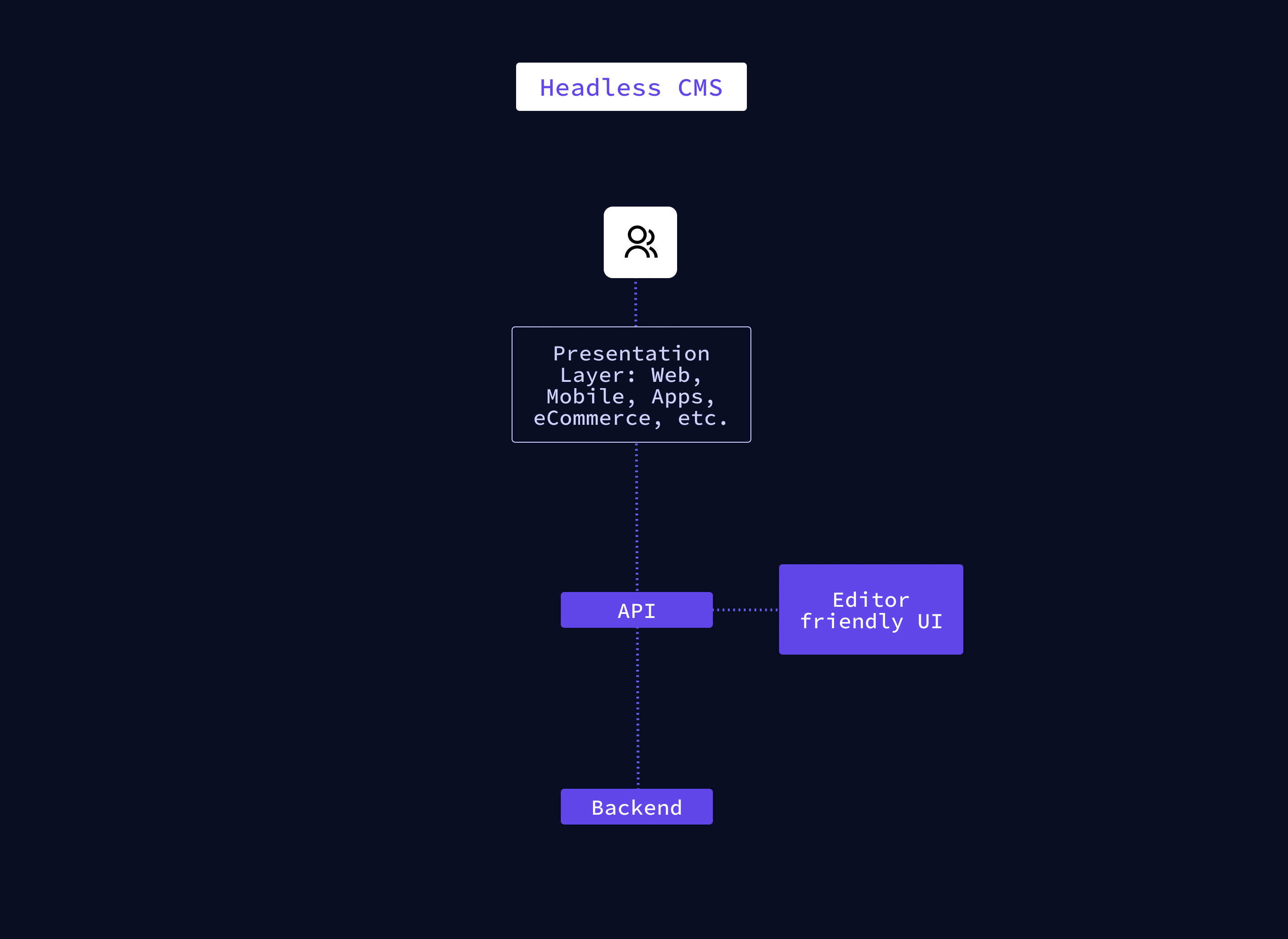Headless CMS Vs. Decoupled CMS
Unlike traditional Web CMS, decoupled or headless CMSs use separate infrastructure for authoring and delivery. However, there are a few key differences to consider.
Decoupled CMS, headless CMS, traditional CMS, legacy CMS - all terms used when teams are looking for a new system to house their growing content needs. However, it isn’t always clear what the differences between them are. We covered the difference between a headless CMS and a traditional CMS in a previous post. In this post, let’s look into how a Decoupled CMS and a Headless CMS differ.
What is a Decoupled CMS?Anchor
A decoupled CMS is a content management system that has a separate frontend and backend but usually has an included frontend presentation layer.
The presentation layer enables teams to have the benefits of separate frontend and backend systems while still having a way to get up and running quickly. Decoupled CMS often include templates and pre-configurations which make it easy for teams to get up and running with their digital experiences. In a way, Decoupled CMS are similar to a traditional CMS or page-builders, where teams may want to have a preview mode that is immediately presented to them based on their changes in the CMS.
Disadvantages of a Decoupled CMSAnchor
The main drawback of decoupled CMS is that they make assumptions about your frontend. Instead of being able to flexibly build for any type of presentation layer, whether that be a website, IOT device, or application, teams are limited to the preconfigured templates for a specific frontend. While you may choose not to use the frontend templates when building sites, you lose the value of a decoupled CMS giving you a ready-to-go frontend.
While generally more customizable than Web CMS, Decoupled CMS are less flexible than headless CMS and can become cumbersome over time.
Advantages of a Decoupled CMSAnchor
The benefits of decoupled CMS are that they make it easier for teams with limited frontend resources to get up and running quickly. They can be a good choice to find a balance between a separated system, and yet gain the benefits of a traditional CMS. Some Headless CMS can give teams a similar experience to a decoupled CMS through integrations with popular hosting services like Gatsby, that offer the possibility to set up Preview URLs.
Decoupled CMS: Pros and Cons
| Pros | Cons |
|---|---|
| Teams have presentation layer out of the box for simple use cases | Teams have to build frontend for custom, more complex use cases where existing templates may become deadweight |
| Teams with limited resources can get up and running quickly | Less flexible than headless CMS |
| Teams familiar with the page builder approach will find the experience similar | Templates can become limiting over time |
What is a Headless CMSAnchor
A headless CMS is a content management system that only focuses on delivering content via API, usually in a structured JSON format. A headless CMS provides no built in presentation layer and it does not offer any themes or templates out of the box. This means that headless CMS are not tied to a specific frontend framework, making it a highly flexible system.
Teams can get started by building a flexible structured content model (schema) that enables them to deliver their content to multiple channels of their choice, without the restrictions of a template-based CMS.
Headless CMS enable teams to build a flexible, data-rich content repository that can be used for a wide range of use cases - from highly complex streaming platforms, to modern eCommerce solutions and marketing websites focused on SEO.
Taking the structured content approach helps future proof their tech stacks and makes it easy to take advantage of UX innovations of evolving frontend frameworks.
Disadvantages of a Headless CMSAnchor
Drawbacks of a headless CMS include the necessity of developer resources, and that the initial setup can require planning across the tech stack. Quick start guides and resources about what to consider when getting started with a microservice tech stack can be valuable resources to help bridge the information gap in the early days of working with a headless CMS.
Advantages of a Headless CMSAnchor
The benefits of a headless CMS include greater flexibility, more agility, and better performance. Teams can work independently of each other while creating a powerful end product. With a headless CMS, the final customized tech stack meets the needs of a team’s use case without being weighed down by unnecessary tooling, vendor lock-in, or overly-complicated monolithic suites.
Headless CMS: Pros and Cons
| Pros | Cons |
|---|---|
| Ability to build products for multiple channels while drawing from a single data-rich content repository | Building initial infrastructure can take time for teams new to the headless approach |
| Flexible system that enables greater customization | Onboarding needed for teams to adjust to lack of presentation layer or teams may build presentation layer using integrations |
| Agile team workflows to ensure teams are working efficiently | |
| Expedite new project timelines |
To evaluate which system is more beneficial to your use case, reach out to us to learn more about the applications of a Headless CMS in the real world.


